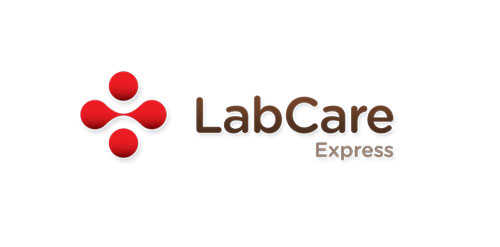Description

FP-LIMS

Saral Path
Comprehensive Overview: FP-LIMS vs Saral Path
FP-LIMS and Saral Path are both software solutions used in the laboratory information management systems (LIMS) domain, but they serve different niches within this broad area. Here’s a detailed overview of each, touching on their primary functions, target markets, market share, user base, and key differentiators.
FP-LIMS
a) Primary Functions and Target Markets
-
Primary Functions: FP-LIMS is designed to manage and streamline laboratory processes, facilitating the handling of samples, workflow automation, data tracking, and regulatory compliance. It is often used for quality assurance and quality control (QA/QC) data management in various industries.
-
Target Markets: FP-LIMS typically targets sectors such as manufacturing, automotive, aerospace, food & beverage, and any industry requiring stringent QC processes. It is particularly valuable in environments where data precision and traceability are critical.
b) Market Share and User Base
-
Market Share: FP-LIMS holds a modest market share within the broader LIMS market. It is somewhat niche, given its focus on industrial labs requiring robust QA/QC functionalities.
-
User Base: The user base generally consists of large enterprises or specialized labs in industrial sectors. The number of users is smaller compared to LIMS designed for more general purposes, but they are deeply integrated within their respective industries.
c) Key Differentiating Factors
-
Industrial Focus: Unlike many LIMS solutions, FP-LIMS is tailored specifically for industries that rely heavily on constant quality checks and data reliability.
-
Customization and Integration: It offers high levels of customization and can be integrated with various industrial-grade equipment, providing enhanced process control.
Saral Path
a) Primary Functions and Target Markets
-
Primary Functions: Saral Path is primarily a pathology lab management system. It handles patient data management, test result processing, billing, and reporting. It is more geared towards medical and clinical environments.
-
Target Markets: The primary targets for Saral Path are pathology and diagnostic labs, particularly those in healthcare settings. It is designed to streamline operations in clinical laboratories.
b) Market Share and User Base
-
Market Share: Saral Path has a more regionally focused market share, particularly strong in areas where it has established partnerships with healthcare providers. Its footprint in the clinical laboratory space is more pronounced compared to industrial LIMS like FP-LIMS.
-
User Base: Typically used by hospitals, diagnostic centers, and independent pathology labs. Its user base is more extensive in the clinical sector compared to FP-LIMS.
c) Key Differentiating Factors
-
Clinical Orientation: Unlike FP-LIMS, Saral Path is specifically designed for the healthcare industry, dealing extensively with patient data and diagnostics.
-
Patient Management Features: It offers features that are essential for managing patient information and clinical workflows, including integration with electronic medical records (EMRs).
Comparison Summary
- Sector Focus: FP-LIMS is industrial-focused, while Saral Path is clinical-focused.
- Customization vs. Standardization: FP-LIMS offers extensive customization for industrial processes, whereas Saral Path provides standard features needed for clinical labs.
- Data Sensitivity: Both are data-centric, but FP-LIMS emphasizes quality control data, while Saral Path emphasizes patient data management.
- Market Penetration: Saral Path may have a wider user base in the clinical sector, while FP-LIMS serves specific industrial niches.
Overall, while both products are LIMS, their applications, target markets, and functionalities are tailored to their specific industries—industrial and clinical, respectively.
Contact Info

Year founded :
Not Available
Not Available
Not Available
Not Available
Not Available

Year founded :
Not Available
Not Available
Not Available
Not Available
Not Available
Feature Similarity Breakdown: FP-LIMS, Saral Path
When comparing FP-LIMS and Saral Path, two laboratory information management systems (LIMS), there are several aspects to consider: core features, user interfaces, and unique features. Here's a breakdown:
a) Core Features in Common:
Both FP-LIMS and Saral Path are designed to streamline laboratory operations, and they share several core features typical of LIMS solutions:
-
Sample Management: Both systems allow for efficient tracking and management of samples throughout their lifecycle, which includes labeling, storage, and processing.
-
Data Management: They provide robust data handling capabilities, including data collection, storage, and retrieval, ensuring data integrity and compliance with industry standards.
-
Reporting: Both products offer tools for generating reports, including customizable options to fulfill various reporting needs.
-
Performance Monitoring: They include features that allow labs to monitor workflows, instrument performance, and overall lab productivity.
-
Quality Control: Incorporation of quality control mechanisms to ensure accuracy and reliability in testing and reporting.
-
Integration: Both systems can integrate with various laboratory instruments and other software systems, such as Enterprise Resource Planning (ERP) systems.
b) User Interface Comparison:
While comparing user interfaces can be subjective and typically requires firsthand experience, we can make general observations based on product descriptions and reviews.
-
FP-LIMS often aims for a more modular and customizable interface, which can be tailored according to specific lab requirements. It is known for its flexibility in terms of workflows and data visualization capabilities.
-
Saral Path might focus on simplicity and ease of use, targeting smaller or medium-sized laboratories that require straightforward functionality and quick deployment without extensive customization.
Both interfaces likely emphasize usability, but the choice between them could depend on the specific needs of a laboratory, such as the complexity of workflows, the need for customization, and the level of technical expertise among the staff.
c) Unique Features:
Unique features that set one product apart from the other can depend significantly on the target market and the specific needs each product aims to address.
-
FP-LIMS:
- Highly Customizable Workflows: FP-LIMS is often noted for its ability to adapt to complex, custom laboratory processes, making it suitable for industries with stringent regulatory requirements.
- Extensive Data Analysis Tools: Offers advanced tools for data analysis and visualization, which can be particularly beneficial for research-intensive laboratories.
-
Saral Path:
- Industry-Specific Modules: May include modules specifically tailored for certain medical diagnostics or pathology labs, which can provide specialized functionalities right out of the box.
- Focus on Cost-Effectiveness: Saral Path might emphasize affordability and ease of setup, making it attractive for smaller labs or those in resource-constrained settings.
These differentiators make each system appealing to different segments of the market, based on their specific operational needs and constraints. Choosing between them would typically involve evaluating the specific functionalities, costs, and support each option offers concerning the laboratory's requirements.
Features

Not Available

Not Available
Best Fit Use Cases: FP-LIMS, Saral Path
FP-LIMS and Saral Path are both Laboratory Information Management Systems (LIMS) but are tailored to different specific needs and contexts. Here’s how they best fit different use cases, industry verticals, or company sizes:
FP-LIMS:
a) Best Fit Use Cases for FP-LIMS:
-
Industrial and Manufacturing Companies: FP-LIMS is highly suitable for large-scale industrial and manufacturing sectors where there is a need for rigorous quality control, compliance, and process optimization in labs.
-
Environmental and Food Testing Laboratories: It serves well in industries that require detailed tracking and reporting of numerous variables and parameters to meet regulatory requirements.
-
Chemical and Pharmaceutical Industries: Companies in these sectors benefit from FP-LIMS in managing complex formulations, batch records, and quality checks.
-
Metallurgy and Material Testing Labs: Industries involved in metals and materials often need precise and customizable testing processes that FP-LIMS can effectively manage.
d) Industry Verticals and Company Sizes for FP-LIMS:
- Large Enterprises: FP-LIMS is ideal for larger companies with complex data management needs and multiple laboratory sites.
- Multinational Companies: It can handle diverse regulatory compliance requirements across different countries.
- Industries with Stringent Compliance Standards: Sectors with high demands for data integrity and traceability benefit from FP-LIMS.
Saral Path:
b) Preferred Use Cases for Saral Path:
-
Clinical and Medical Laboratories: Saral Path is specially designed for clinical lab environments focusing on patient-centric outcomes, such as pathology labs.
-
Diagnostic Centers and Hospitals: It caters well to diagnostic centers that require streamlined workflows for diagnostic tests and patient management.
-
Small to Medium-sized Laboratories: Easier setup and more straightforward features make it more accessible for smaller laboratories or those beginning digital transitions.
d) Industry Verticals and Company Sizes for Saral Path:
- Healthcare Providers: Optimal for healthcare settings where patient data management, test histories, and efficient reporting are crucial.
- Small to Medium Healthcare Institutions: Ideal for institutions looking for a cost-effective solution with a focus on medical diagnostics rather than complex industrial management.
- Independent Pathology Labs: Suited for independent labs that need dedicated support for lab testing and reporting without extensive regulatory pressure from industries like pharma or manufacturing.
Comparison:
- Customizability and Complexity: FP-LIMS is more customizable and hence suitable for industries with complex testing protocols. Saral Path focuses more on workflow efficiency within clinical settings.
- Scale and Infrastructure: FP-LIMS is designed for larger scale industries with higher infrastructure, while Saral Path is more agile, suitable for smaller to medium entities with simpler requirements.
Both systems offer valuable support for their respective domains, ensuring labs can meet their specific requirements with tailored functionalities.
Pricing

Pricing Not Available

Pricing Not Available
Metrics History
Metrics History
Comparing undefined across companies
Conclusion & Final Verdict: FP-LIMS vs Saral Path
To provide a comprehensive conclusion and final verdict on FP-LIMS and Saral Path, let’s break down each aspect:
a) Considering all factors, which product offers the best overall value?
-
FP-LIMS: Ideal for industries that require robust Laboratory Information Management Systems (LIMS) with advanced features. It's often well-suited for laboratories with complex workflows that need customization and integration with various instruments and databases.
-
Saral Path: Best tailored for medical diagnostic labs and hospitals that require an efficient and user-friendly system to handle patient data, sample tracking, reporting, and compliance with healthcare standards.
Given these considerations, the best overall value depends on the specific needs of the user:
- For industrial, environmental, and research labs requiring customization and scalability, FP-LIMS may provide better value.
- For medical diagnostic labs focused on cost-effectiveness, ease of use, and healthcare integration, Saral Path might offer superior value.
b) What are the pros and cons of choosing each of these products?
FP-LIMS:
Pros:
- Highly customizable and scalable to fit specific lab requirements.
- Strong compatibility with a wide range of scientific instruments and databases.
- Comprehensive data management and security features.
Cons:
- May require more time and technical expertise to implement and customize.
- Potentially higher initial investment due to advanced features and customization needs.
Saral Path:
Pros:
- User-friendly interface tailored for medical labs, facilitating easier user adoption.
- Cost-effective and designed specifically for healthcare diagnostics.
- Quick setup and implementation with a focus on standard healthcare protocols.
Cons:
- Limited customization flexibility compared to more generic LIMS solutions.
- May not be suitable for non-medical or highly specialized laboratories.
c) Are there any specific recommendations for users trying to decide between FP-LIMS vs Saral Path?
-
Assess Lab Needs: Identify the primary function of your lab. If it revolves around healthcare diagnostics, Saral Path might be more advantageous. For specialized testing outside of healthcare, FP-LIMS could be more suitable.
-
Consider Budget and Expertise: FP-LIMS might require a higher upfront investment and technical expertise, making Saral Path more appealing for smaller medical labs with budget or staffing constraints.
-
Evaluate Future Growth: If your lab plans to expand services or integrate more complex workflows, FP-LIMS offers scalability and customization. Conversely, if maintaining simplicity and cost-effectiveness is paramount, Saral Path remains an attractive option.
Final Verdict: Choose FP-LIMS for its customization and integration capabilities critical for complex industrial and research laboratories. Opt for Saral Path to enjoy a streamlined, cost-effective solution tailored specifically for medical diagnostic environments. Make your choice based on your lab’s specific operational needs, budget, and growth plans.
Add to compare
Add similar companies




